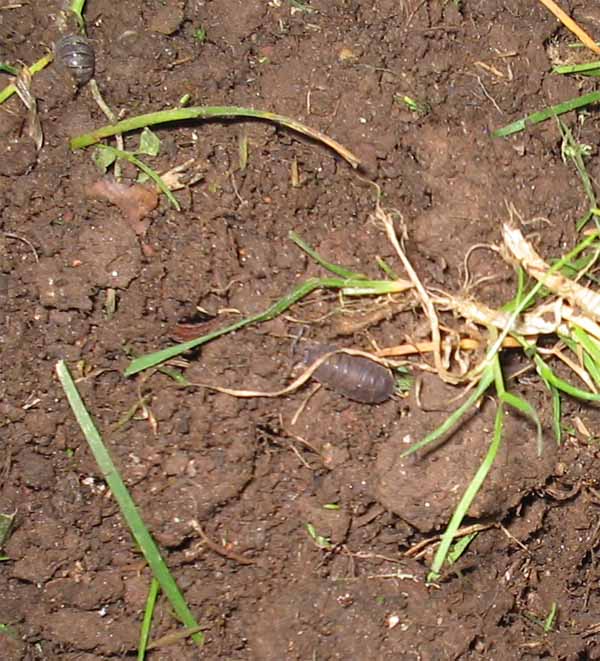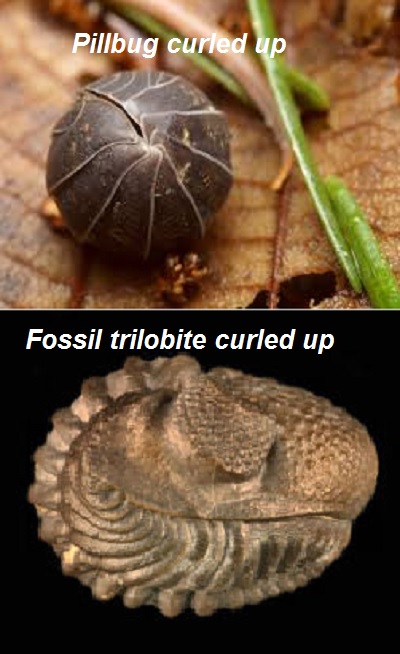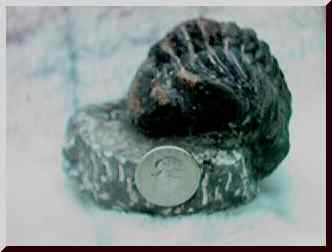A1. TRILOBITE
Trilobites are ancient arthropods. They are distantly related to such modern arthropods as insects, spiders, shrimp, and lobsters. Trilobites arose in the early Cambrian Period about 541 ma (mille annum, i.e. million years), and are among the first skeletonized animals of advanced anatomic grade to appear in the fossil record. They were common during much of Paleozoic time, but became extinct 252 ma (mille annum, i.e. million years) at the end of the Paleozoic era.
The species we will study is Phacops rana (recently renamed as Eldredgeops), which lived in great numbers in the warm, shallow sea covering what is now New York State during the middle Devonian Period (380 ma).
A1.1 Compare the sketch of a trilobite to the fossilized specimens of Phacops rana (or Eldredgeops) (a species of trilobite from the middle Devonian period) below. What body parts are preserved in the fossilized specimens?


Fossilized specimens of Phacops rana
A1.2 Modern isopods (pillbugs) are among the closest living relatives of trilobites (but they are only very remotely related). Compare Phacops rana (or Eldredgeops) with the isopods. Identify one obvious similarity and one difference between trilobites and isopods. Once you have identified the main difference, discuss further on why there is this difference.




A1.3 If we poke the pillbug with a finger or the end of a pencil, we will see that the pillbug curls up or rolls up into a ball. Why do you think the pill bug reacts that way?
| Trilobite |
 |
A1.4 Looking at some fossilized trilobites we can see that they also use the same mechanism (rolling up). What can you infer about the defense mechanisms of the pill bug and the trilobite?

A1.5 What does this imply about the antiquity of some aspects of modern animal behavior?




Click here to go back to Fossil Identification
©J.A. Chamberlain, Jr. - Brooklyn College - Earth and Environmental Sciences